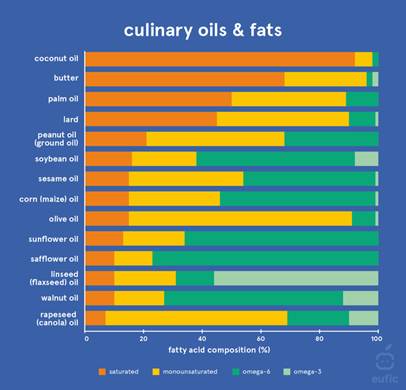Just last week, I found myself in front of the protein bar aisle—usually a quick grab-and-go moment—but this time, I paused. The shelves were bursting with options promising everything from sharper focus to gut support to better mood. Words like “nootropics,” “adaptogens,” “probiotic-rich,” and “mood boosting” weren’t just marketing fluff—they felt like an invitation. Suddenly, I wasn’t just picking out a snack—I was choosing how I wanted to feel.
The line between snack and supplement has officially blurred, and honestly? It’s thrilling. For the first time, grabbing a mid-day bite feels less like a compromise and more like a small act of self-care.
The Bigger Shift: Snacks with a Mission
For decades, some of the biggest players in food have faced criticism for fueling America’s addiction to ultra-processed, sugar-laden, sodium-packed snacks. But here’s what’s quietly happening behind the scenes: many of these same companies are reimagining what snack time could look like—and using their scale, research power, and global reach to do it.
From customizable hydration pods to gut-boosting popcorn, the new face of “junk food” isn’t about guilt—it’s about function. And for millions of people looking to make small but meaningful changes to their health, this is exactly the kind of shift we’ve been waiting for.
Consumers are no longer eating just to curb cravings—they’re seeking foods that contribute to better sleep, clearer focus, reduced stress, and long-term wellness. According to Mintel, 43% of Americans want food that supports both mental and physical health. And now, GLP-1 users crave healthy foods more than before they were on the weight loss drug.
This demand is changing everything:
- Product Design: Expect more products engineered for mood, immunity, energy, protein, and sleep.
- Personalization: Smart bottles, wearable-connected apps, and AI-driven snack suggestions are just the beginning.
- Mainstream Accessibility: Functional food isn’t just for health food stores—it’s in big box chains, vending machines, and drive-throughs.
From Candy to Clean: Hershey’s Strategic Shift
Once a symbol of sweet indulgence, The Hershey Company is now leading a transformation.

Its partnership with nutrient delivery startup VitaKey marks a turning point—not just making snacks taste good, but making them do good, too. Think probiotics, vitamins, and minerals that actually survive processing and deliver benefits where it counts.
Hershey’s acquisition of LesserEvil, the better-for-you popcorn brand made with organic ingredients and healthy fats, sends a clear message: consumers want more from their snacks—and Big Food is listening.
“We are responding to the fact that health and wellness has distinct consumer needs. You can see that with our portfolio, with areas that have protein, areas that are zero sugar, etc.”
— Michele Buck, CEO of Hershey
PepsiCo’s Personalized Playbook
PepsiCo, long associated with soda and chips, is pivoting in bold new ways. Its Gatorade Gx system, which personalizes hydration pods to fit your workout needs, taps into the growing trend of functional personalization—meeting people where they are in their wellness journey.
“At PepsiCo, innovation is a driver for everything we do,” said CEO Ramon Laguarta. “That’s why I’m excited about the launch of new Gatorade innovations—the improved Gx app, Smart Gx Bottle and Gatorade Gummies.”
From prebiotic chips to nootropic drinks, PepsiCo is designing snacks and beverages that support hydration, cognition, recovery, and more. It’s a reflection of what consumers have been asking for: not less food, but better food.
Functional Food Movement Powered by Scale
These are not isolated moves. Major brands across the food landscape are channeling resources into rethinking convenience foods—not just for profit, but because consumer demand is clear. People want snacks that support physical and mental health, without sacrificing taste or convenience.
 General Mills has teamed up with GoodBelly to infuse cereals and yogurts with probiotics—bringing gut health to breakfast tables everywhere.
General Mills has teamed up with GoodBelly to infuse cereals and yogurts with probiotics—bringing gut health to breakfast tables everywhere.- Kraft Heinz launched NotMac&Cheese, a plant-based twist on its iconic comfort food.
- Nestlé’s nesQino lets users blend personalized smoothies and teas packed with freeze-dried functional ingredients.
- Unilever’s Hellmann’s Vegan offers a plant-based mayo that’s earned praise even from longtime traditionalists.
These companies are not just following a trend—they’re helping shape it.
With the ability to reach millions of homes, school cafeterias, vending machines, and gas station shelves, Big Food’s role is not just influential—it’s essential.
How to Tell If a Functional Snack Is Legit
With all these new products claiming to support brain function, immunity, or mood, it’s fair to wonder: how do we know what’s real?
Fortunately, the science behind many of these ingredients is catching up fast. Some of these added ingredients include:
- Adaptogens like ashwagandha have been shown in studies to reduce stress
- Probiotics play a clear role in digestive and immune health
- Nootropics like L-theanine can enhance focus and calm
But not all claims are created equal.
Before you toss that “brain-boosting” bar or “immunity-enhancing” soda into your cart, take a moment to turn over the package to carefully examine its nutrition facts and ingredients.
Here’s what to look for:
- Look for named, science-backed ingredients: Adaptogens, nootropics, probiotics like Lactobacillus or Bifidobacterium, and nutrients like magnesium or vitamin D are common—but should be clearly listed, not hidden behind terms like “natural blend” or “proprietary mix.”
- Check for real amounts: Functional ingredients should list their quantity, such as “250mg L-theanine” or “1 billion CFUs of probiotics.” Vague claims without dosages may be more about marketing than actual benefit.
- Watch ingredient order: If the active ingredient is at the end of a long list—especially after things like flavorings or preservatives—it’s likely included in tiny amounts. Also, look for the sugar, saturated fat and sodium content. Just because it has nutrients, if there is sugar it will contradict the benefits.
- Seek transparency and third-party certifications: Look for labels like NSF Certified or Informed Choice. These signal quality and accountability.
- Ignore the hype on the front: Turn the package over. The nutrition facts and ingredient list tell you far more than flashy slogans ever will.
- And most importantly, trust, but verify: Big Food may be changing, but consumers are more educated than ever—and these companies know it. The more informed you are, the more you reward brands that are doing this right.

Big Food, Big Impact: A Path Toward Public Health
Let’s be honest: small wellness startups have done a lot to push the health food movement forward. But when it comes to reaching scale—especially in places where chronic illness and obesity are rampant—it takes the distribution power of the biggest companies in the world.
In the U.S., over 42% of adults live with obesity, and chronic illnesses tied to poor diet cost the economy $1.1 trillion annually, according to the CDC.
When companies like Kraft, Nestlé, or PepsiCo commit to reformulating their products to reduce sodium, sugar, and processed fats—while adding functional benefits—they’re not just chasing trends. They’re addressing real, systemic health problems at scale.
Final Bite: Big Food’s Wellness Rebrand Is Just Beginning
A few years ago, the idea of healthy, functional snacks from soda giants or candy companies might’ve seemed laughable. But now? It’s not only happening—it’s reshaping what wellness looks like for everyday consumers.
Lu Ann Williams, Global Insights Director at Innova Market Insights, puts it best:
“Consumers expect more from their food.
They want it to taste great but also work for them—whether that means more energy, better sleep, or improved digestion.”
And who better to answer that call than the companies that already feed the world?


 This isn’t just about cooking with oil. It’s part of a broader philosophical divide. As institutional trust declines, many are turning to tradition and nature for guidance—assuming, sometimes wrongly, that these values offer more than modern science.
This isn’t just about cooking with oil. It’s part of a broader philosophical divide. As institutional trust declines, many are turning to tradition and nature for guidance—assuming, sometimes wrongly, that these values offer more than modern science.



 RFK is right: so many Americans are unhealthy.
RFK is right: so many Americans are unhealthy.













